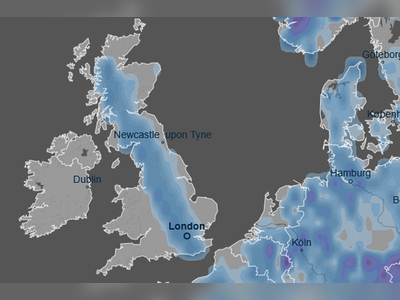
Mystery over where £50,000,000,000 of UK banknotes are
They could be stuffed in briefcases somewhere or in holdings overseas – but they are not being spent in shops or identified as savings held by households.
The National Audit Office (NAO), said little is known about the massive amount of cash, which might also be held for use in the ‘shadow economy’.
There is little reliable information to quantify how much is likely to be held where, the NAO said.
A ‘fragmented’ approach is being taken by the bodies involved in the UK’s cash system, and a co-ordinated effort is needed, they said.
Five public bodies – the Treasury, the Bank of England, the Royal Mint, the Financial Conduct Authority (FCA) and the Payments Systems Regulator (PSR) – play a role in administering or overseeing the cash system.

But these bodies lack a shared view of what a good outcome for the consumer looks like and how the costs of achieving this are to be taken into account, the NAO’s report said.
There is no single body with responsibility for overseeing how well the cash system is performing.
The NAO also said it could take at least a decade for current stocks of 2p and £2 coins to run out.
When fieldwork was carried out, the Mint had no plans to produce new 2p or £2 coins for at least 10 years.
When the Mint replaced the old £1 coin, people returned unexpectedly large volumes of all coin denominations, the report said.
The Royal Mint’s ‘buffer’ stocks in March 2020 exceeded targets in all denominations, the NAO said, with holdings of 1ps and 2ps six and eight times above target respectively, and £2 coins 26 times over target.
While the storage cost of the excess stocks is relatively small, the Mint’s production of UK coins will be reduced over the next decade, as it balances maintaining production capability with steady stock reduction, the NAO said.
Coin production shrank by 65% in the last decade to 383 million UK coins a year in 2019-20, from around 1.1 billion in 2010-11.

It comes as people are using less and less cash.
Ten years ago, it was used in six in 10 transactions, but by 2019 it was used in fewer than three in 10. Forecasts suggest it might be one in 10 by 2028.
Covid-19 has potentially accelerated the decline. Industry data suggests market demand for notes and coins from cash centres plunged by 71% between early March and mid-April.
However, cash use appears to have been recovering more recently as businesses have re-opened.
The NAO said older people and those on low incomes are particularly likely to rely on cash.
Gareth Davies, the head of the NAO, said: ‘As society progresses towards the wide use of digital payments, the use of cash in transactions is dwindling. It may become harder for people to access cash when they need it and those without the means to pay digitally will struggle if cash is not accepted.’
‘HM Treasury now works more closely with the public bodies in the cash system to achieve the Government’s goal of safeguarding access to cash. However, the approach is fragmented, and it is not clear that the action being taken will keep up with the pace of change.’
Comments












